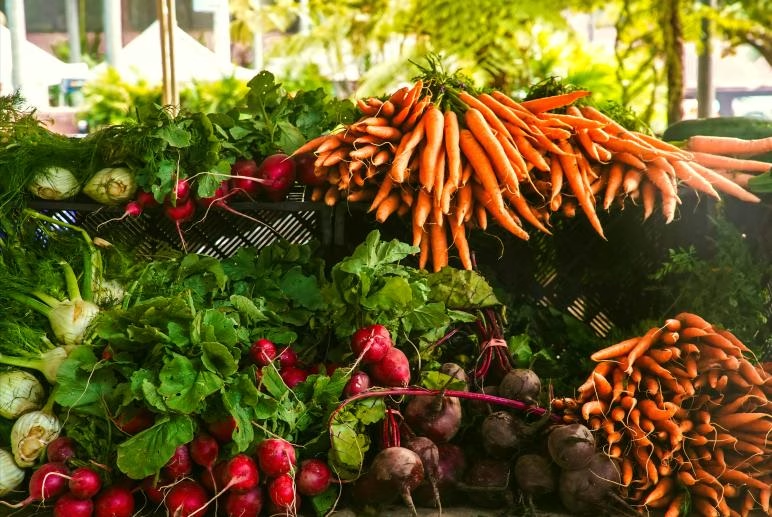A balanced daily diet requires a variety of vegetables and their nutritional value. However, many people prioritize flavor and texture when preparing vegetables. This approach can lead to overlooking nutrient retention and loss. What are the unique nutrients found in vegetables? To fully absorb the nutrients, you need to prepare them correctly.
When preparing vegetables, consider their firmness and color.
Minerals are the most abundant nutrients in vegetables. Recently, the mineral content in vegetables has dropped by nearly half, so you need to eat more to get enough.
Eating Enough Vegetables
The amount of vegetables we eat is roughly the amount of raw vegetables that can fit in two palms. Reheating shrinks the amount, so reheated vegetables should be about the size of a palm. This is just for one meal, but it’s a significant amount when calculated over a day.
Eating this amount in a day is quite challenging, which is why people tend to drink fruit and vegetable juices to supplement their diet. Fruit and vegetable juices are extracted beverages that prioritize flavor and often contain ingredients other than vegetables. Therefore, even if you drink fruit and vegetable juices, you still won’t achieve your ideal intake.
Pay attention to the firmness of vegetables
To identify vegetables with high mineral content, pay attention to their firmness.
In addition to minerals, vegetables and fruits contain nutrients called phytochemicals. Examples include lycopene, carotene, and polyphenols. These are a general term for self-protective compounds secreted by plants. While much remains to be understood, their antioxidant, detoxifying, and immune-boosting properties are known to have recently garnered significant public attention.
(Antioxidants are nutrients that prevent cellular oxidation, which can lead to aging and cancer.)
Phytochemicals cannot be synthesized in the human body; they are found only in plants, and most are unique to each plant. For example, lycopene is found only in tomatoes, and lycopene glycosides are found only in eggplant. Only by eating a variety of vegetables can your body obtain a wide range of phytochemicals.
Don’t just eat uncooked vegetables.
Because vegetable cells are protected by hard cell walls, phytochemicals cannot be absorbed from eating uncooked vegetables. Chew, grind, or heat vegetables thoroughly to soften them and break down their cells before eating. This is the key to effectively absorbing phytochemicals.
How to consume varies depending on the food.
Phytochemicals vary in properties depending on their composition, such as heat resistance and fat- or water-soluble properties. Therefore, my recommended consumption method will vary depending on the food.
For example, the isothiocyanates in cabbage have low heat tolerance, making them best eaten raw while also providing access to similarly heat-sensitive vitamins. The fat-soluble components in pumpkin and carrots are better absorbed when cooked with oil, so stir-frying or deep-frying is recommended. Eggplant and tomatoes, on the other hand, contain many phytochemicals in their peels and seeds, so they should be eaten whole.
Some types of fruit increase in size over time. For example, bananas only reach their highest polyphenol content after they have reached their sugar spot, which helps prevent lifestyle diseases and aging.
Suggested Ways to Consume Phytochemicals Smartly
Eat the peel and seeds together (eggplant, tomatoes, cucumbers, etc.).
Sauté carotene-rich vegetables with oil (pumpkin, carrots).
Cover the pot when stewing vegetables to prevent volatile phytochemicals from escaping with the steam.
Add the phytochemicals dissolved in the ingredients to the soup and drink it together.
Grind spicy ingredients like wasabi and daikon radish.
Actively consume nutrient-rich, seasonal vegetables.
Food contains a variety of ingredients, and different ways of consuming them may vary to maximize the absorption of each component.
Don’t focus on maximizing phytochemical absorption. Combining a variety of foods, varying the cooking methods, and enjoying them happily will help you absorb balanced nutrients and achieve a synergistic effect.
To simply categorize the nutrients in vegetables, you can group them into broad categories based on their color. Remember to consume every color to effectively reap the benefits of vegetables!


Leave a Reply